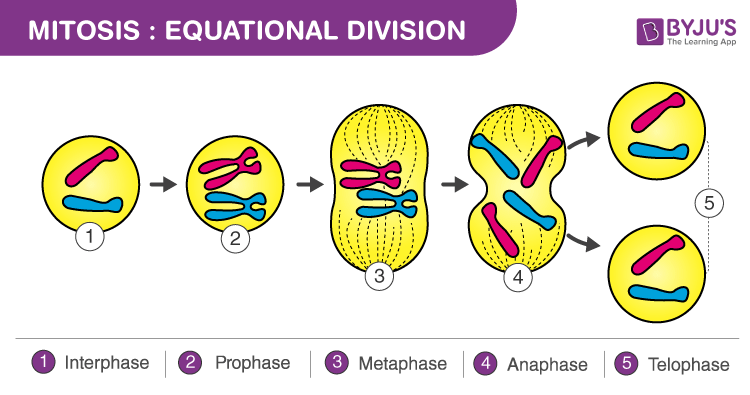Space Science
Cell theory is a scientific theory stating that the cell is the smallest unit of living things and that all cells come from cells. To form new cells, a cell divides. For most cells, mitosis is the part of cell division process by which the cell nucleus divides.
Before a cell reproduces, it goes through a period called interphase. During interphase, the cell grows and material in its nucleus replicates, or duplicates itself.
After interphase, mitosis begins. The four major phases of mitosis are prophase, metaphase, anaphase, and telophase.

Based on the illustration, during which phase of mitosis does the parent cell begin to separate into two cells?
Anaphase
The matter that makes up the observable universe is comprised of atoms. Atoms, in turn, are made up of what three subatomic particles?
Protons, Neutrons, and Electrons
Bacterium Cell And Animal Cell
A bacterium is a single-celled organism. Animals are multicelled.
How do a bacterium and an animal cell differ?
A. A bacterium has a nucleus, where as an animal cell does not.
B. The structure of an animal cell is more complex than the structure of a bacterium.
C. A bacterium has more cytoplasm than an animal cell.
D. An animal cell can move more easily than a bacterium.
B.
An animal cell has a more complex structure than a bacterium cell.
An atom has the same number of protons and electrons, so it is electrically balanced. True or False
True
However, an atom can lose or gain electrons. When this occurs, the particle changes from a neutral atom to an ion. An ion is an electrically charged particle produced when electrons are lost or gained by an atom.
In a laboratory setting, concentrations for solutions are measured in molarity, which is the number of moles per liter (mol/L). Concentrations are more common units on the labels of household products. For a particular brand of bleach, the concentration of sodium hypochlorite (NaClO) is reported on the bottle as 7.25% by mass. The following information can thus be used to calculate the molarity of NaClO in the bleach:
* 1L of bleach has a mass of 1,100 grams.
*7.25% of the mass of bleach is NaClO.
*1mol of NaClO has a mass of 74.44 grams.
What is the molarity (mol/L) of NaClO in the bleach?You may use the calculator
A. 0.097
B. 0.93
C. 1.07
D. 79.75
